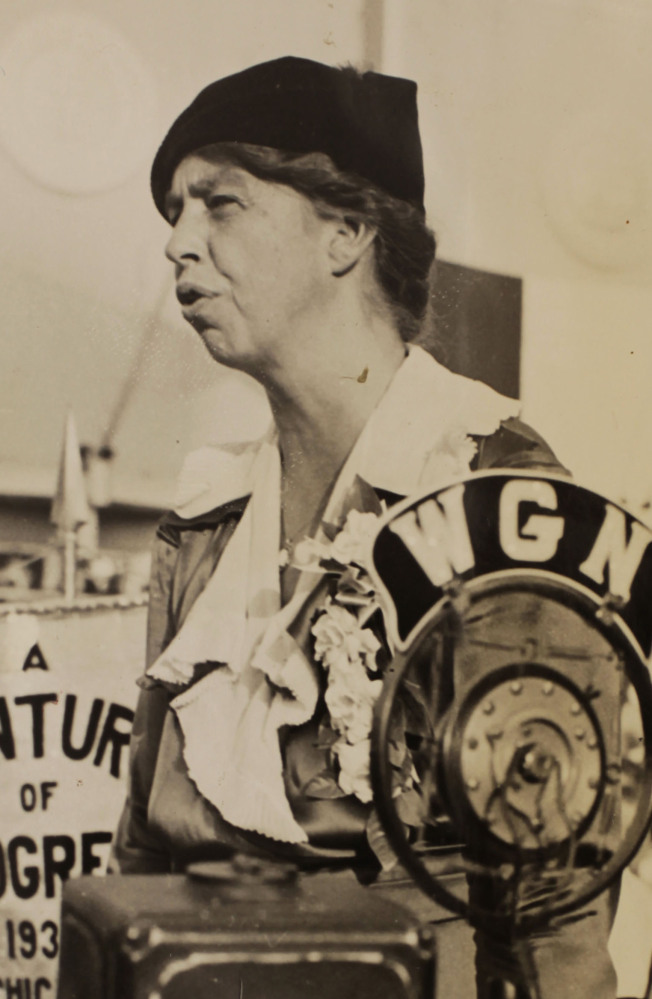WASHINGTON — Will it be Susan B. Anthony or Harriet Tubman? Eleanor Roosevelt or Rosa Parks? Or another important woman from America’s history?
These will be among the names the nation ponders after the White House’s announcement early Thursday that it will feature a woman on the $10 bill, the first time in well over a century that a female portrait will grace America’s paper money.
The redesigned bill will be unveiled in 2020 to celebrate the 100th anniversary of the right of women to vote. The Treasury Department is launching a massive public campaign to solicit suggestions through social media and town halls for what the bill should look like and who should be on it. The only requirements for candidacy are that they be deceased and embody the theme of the bill’s new look: “Democracy.”
“America’s currency makes a statement about who we are and what we stand for as a nation,” said Treasury Secretary Jack Lew, who has the authority to make the decision.
The debate over who should be the face of the new $10 bill could become part of a broader conversation about the social and economic progress of women. Selecting just one person for such a symbolic role may involve trade-offs, forcing officials to decide which major milestone in American history to highlight.
As it proceeds, Treasury could also face backlash over its decision to kick off the current face of the $10 bill, Alexander Hamilton, the country’s first secretary of the Treasury, who united the nation under a common currency. As discussion over placing a woman to appear on U.S. currency began to heat up this year, some had suggested replacing Andrew Jackson, the controversial seventh president who is featured on the $20 bill.
Though the founding fathers have long dominated the dollar, the only portrait actually required by law is that of George Washington on the $1 bill. The last time a woman was featured was in the late 1800s, when Martha Washington appeared on the silver dollar certificate.
Other attempts to incorporate images of women into the nation’s currency have failed to take off. Susan B. Anthony and Sacagawea had brief sojourns on the $1 coin before the U.S. Mint stopped making them due to lack of popularity. Pocahontas was part of a group portrait on a bill circulated in the mid-19th century.
“Young girls across this country will soon be able to see an inspiring woman on the ten dollar bill who helped shape our country into what is today and know that they too can grow up and do something great for their country,” Sen. Jeanne Shaheen, D-New Hampshire, who introduced a bill in April to get a female face into American currency. “Make no mistake, this is a historic announcement and a big step forward.”
Her legislation was a response to a movement calling for an overhaul of the $20 bill. A campaign called Women on 20s petitioned the White House this spring to oust former President Andrew Jackson from the denomination.
Replacing him with a woman was only part of the reason for targeting the $20. The group also objected to Jackson’s authorization and enforcement of the Indian Removal Act of 1830, which forced several tribes to give up their land to white farmers and move to Oklahoma. The former president was also skeptical of paper money, preferring to use gold or silver. The Women on 20 campaign went viral, and more than 600,000 people voted in an online poll for a new image. Out of a list of 15 women suggested by the group, Harriet Tubman emerged as the top choice.
“It’s been our goal for the beginning to see the face of a woman on our paper currency. So naturally I’m excited to hear that our mission will be accomplished,” said Susan Ades Stone, the group’s executive director, said.
Send questions/comments to the editors.



Success. Please wait for the page to reload. If the page does not reload within 5 seconds, please refresh the page.
Enter your email and password to access comments.
Hi, to comment on stories you must . This profile is in addition to your subscription and website login.
Already have a commenting profile? .
Invalid username/password.
Please check your email to confirm and complete your registration.
Only subscribers are eligible to post comments. Please subscribe or login first for digital access. Here’s why.
Use the form below to reset your password. When you've submitted your account email, we will send an email with a reset code.